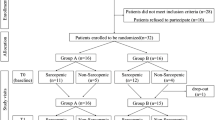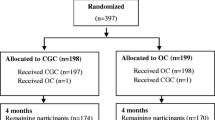Key summary points
To assess the association between in-hospital dietary intake and the course of mobilization of hip-fractured older patients in the post-surgical period until hospital discharge.
AbstractSection FindingsIn hip-fracture older patients, energy-protein intake and Charlson Comorbidity Index are the main factors associated with poor mobilization in the post-surgical period.
AbstractSection MessageThe worldwide epidemic of hip fractures and its impact on the subject health and functionality demands to design effective strategies to manage this situation, focused on early detection of nutritional deficits to avoid muscle wasting and enhancement of fast mobilization after hip-fractured surgery.
Abstract
Background and purpose
Most older persons who suffer hip-fracture are frail and show comorbidities and functional deterioration, with poor short and long-term prognosis, high morbidity rates, and premature death. The aim of this work was to assess the association between in-hospital dietary intake and the course of mobilization of hip-fractured older patients in the post-surgical period until hospital discharge.
Methods
Prospective, observational, cohort study, n = 90 hip-fracture ≥ 65 years old patients. Pfeiffer questionnaire, Barthel Index, Charlson Comorbidity Index, Mini Nutritional Assessment, mobilization and dietary assessment, body mass index, arm and calf circumferences and blood analytical determinations. The mobilization progress was assessed measuring the ability to sit down and walking, at 2nd and 3rd–4th days post-surgery until discharge, respectively.
Results
Charlson Comorbidity Index was associated with ability to sit down, and energy intake was associated with ability to walk. Energy and protein intake is an important factor influencing mobilization success in older patients after surgery. Poor mobilization is related to high Charlson Comorbidity Index.
Conclusions
In hip-fractured older patients, energy-protein intake and comorbidities assessed by Charlson Comorbidity Index are the main factors associated with poor mobilization in the post-surgical period.
Similar content being viewed by others
References
Kanis JA, Odén A, McCloskey EV, Johansson H, Wahl DA, Cooper C (2012) A systematic review of hip fracture incidence and probability of fracture worldwide. Osteoporos Int 23:2239–2256
Peeters CMM, Visser E, Van de Ree CLP, Gosens T, Den Oudsten BL, De Vries J (2016) Quality of life after hip fracture in the elderly: a systematic literature review. Injury 47:1369–1382
Hernlund E, Svedbom A, Ivergård M, Compston J, Cooper C, Stenmark J et al (2013) Osteoporosis in the European Union: medical management, epidemiology and economic burden. Arch Osteoporos 8:136
Buecking B, Bohl K, Eschbach D, Bliemel C, Aigner R, Balzer-Geldsetzer M et al (2015) Factors influencing the progress of mobilization in hip fracture patients during the early postsurgical period? A prospective observational study. Arch Gerontol Geriatr 60:457–463
Auais M, French SD, Beaupre L, Giangregorio L, Magaziner J (2018) Identifying research priorities around psycho-cognitive and social factors for recovery from hip fractures: an international decision-making process. Injury 49:1466–1472
Auais M, Morin S, Nadeau L, Finch L, Mayo N (2013) Changes in frailty-related characteristics of the hip fracture population and their implications for healthcare services: evidence from Quebec, Canada. Osteoporos Int 24:2713–2724
Bentler SE, Liu L, Obrizan M, Cook EA, Wright KB, Geweke JF et al (2009) The aftermath of hip fracture: discharge placement, functional status change, and mortality. Am J Epidemiol 170:1290–1299
Prestmo A, Hagen G, Sletvold O, Helbostad JL, Thingstad P, Taraldsen K et al (2015) Comprehensive geriatric care for patients with hip fractures: a prospective, randomised, controlled trial. Lancet 385:1623–1633
Bellelli G, Noale M, Guerini F, Turco R, Maggi S, Crepaldi G et al (2012) A prognostic model predicting recovery of walking independence of elderly patients after hip-fracture surgery An experiment in a rehabilitation unit in Northern Italy. Osteoporos Int 23:2189–2200
Laflamme GY, Rouleau DM, Leduc S, Roy L, Beaumont E (2012) The timed up and go test is an early predictor of functional outcome after hemiarthroplasty for femoral neck fracture. J Bone Joint Surg Am 94:1175–1179
Morri M, Forni C, Marchioni M, Bonetti E, Marseglia F, Cotti A (2018) Which factors are independent predictors of early recovery of mobility in the older adults’ population after hip fracture? A cohort prognostic study. Arch Orthop Trauma Surg 138:35–41
Baer M, Neuhaus V, Pape HC, Ciritsis B (2019) Influence of mobilization and weight bearing on in-hospital outcome in geriatric patients with hip fractures. SICOT J 5:4
Kenyon-Smith T, Nguyen E, Oberai T, Jarsma R (2019) Early mobilization post-hip fracture surgery. Geriatr Orthop Surg Rehabil. https://doi.org/10.1177/2151459319826431
Landi F, Liperoti R, Russo A, Giovannini S, Tosato M, Barillaro C et al (2013) Association of anorexia with sarcopenia in a community-dwelling elderly population: results from the ilSIRENTE study. Eur J Nutr 52:1261–1268
Calvani R, Martone AM, Marzetti E, Onder G, Savera G, Lorenzi M et al (2014) Pre-hospital dietary intake correlates with muscle mass at the time of fracture in older hip-fractured patients. Front Aging Neurosci 6:269
Steihaug OM, Gjesdal CG, Bogen B, Kristoffersen MH, Lien G, Ranhoff AH (2017) Sarcopenia in patients with hip fracture: a multicenter cross-sectional study. PLoS One 12:e0184780
Botella-Carretero JI, Iglesias B, Balsa JA, Arrieta F, Zamarrón I, Vázquez C (2010) Perioperative oral nutritional supplements in normally or mildly undernourished geriatric patients submitted to surgery for hip fracture: a randomized clinical trial. Clin Nutr 29:574–579
Anbar R, Beloosesky Y, Cohen J, Madar Z, Weiss A, Theilla M et al (2014) Tight Calorie Control in geriatric patients following hip fracture decreases complications: a randomized, controlled study. Clin Nutr 33:23–28
Gaffney-Stomberg E, Insogna KL, Rodriguez NR, Kerstetter JE (2009) Increasing Dietary Protein Requirements in Elderly People for Optimal Muscle and Bone Health. J Am Geriatr Soc 57:1073–1079
Raman M, Middleton RJ, Philip A, Kalra PA, Green D (2017) Estimating renal function in old people: an in-depth review. Int Urol Nephrol 49:1979–1988
Pfeiffer E (1975) A short portable mental status questionnaire for the assessment of organic brain deficit in elderly patients. J Am Geriatr Soc 23:433–441
Mahoney FI, Barthel DW (1965) Functional evaluation: the barthel index. Md State Med J 14:61–65
Charlson ME, Charlson RE, Peterson JC, Marinopoulos SS, Briggs WM, Hollenberg JP (2008) The Charlson comorbidity index is adapted to predict costs of chronic disease in primary care patients. J Clin Epidemiol 61:1234–1240
Thompson FE, Subar AF (2013) Dietary assessment methodology. Nutrition in the prevention and treatment of disease, 3rd edn. Elsevier, Amsterdam, pp 5–46
Moreiras O, Carbajal A, Cabrera L, Cuadrado C (2009) Tabla de composición de alimentos, 13th edn. Pirámide, Madrid
Harris JA, Benedict FG (1918) A biometric study of human basal metabolism. Proc Natl Acad Sci USA 4:370–373
Zusman O, Kagan I, Bendavid I, Theilla M, Cohen J, Singer P (2019) Predictive equations versus measured energy expenditure by indirect calorimetry: a retrospective validation. Clin Nutr 38:1206–1210
World Health Organization (2008) Obesity: preventing and managing the global epidemic: report of a WHO consultation. World Health Organization, Geneva
Guigoz Y (2006) The mini-nutritional assessment (MNA®) review of the literature—What does it tell us? J Nutr Health Aging 10:466–487
Goodnough LT, Schrier SL (2014) Evaluation and management of anemia in the elderly. Am J Hematol 89:88–96
O’Daly BJ, Walsh JC, Quinlan JF, Falk GA, Stapleton R, Quinlan WR et al (2010) Serum albumin and total lymphocyte count as predictors of outcome in hip fractures. Clin Nutr 29:89–93
Richter M, Baerlocher K, Bauer JM, Elmadfa I, Heseker H, Leschik-Bonnet E, Stangl G, Volkert D, Stehle P (2019) Revised reference values for the intake of protein. Ann Nutr Metab 74:242–250
Moja L, Piatti A, Pecoraro V, Ricci C, Virgili G, Salanti G et al (2012) Timing matters in hip fracture surgery: patients operated within 48 hours have better outcomes. A meta-analysis and meta-regression of over 190,000 patients. PLoS One 7:e46175
Morghen S, Gentile S, Ricci E, Guerini F, Bellelli G, Trabucchi M (2011) Rehabilitation of older adults with hip fracture: cognitive function and walking abilities. J Am Geriatr Soc 59:1497–1502
Uzoigwe CE, Burnand HGF, Cheesman CL, Aghedo DO, Faizi M, Middleton RG (2013) Early and ultra-early surgery in hip fracture patients improves survival. Injury 44:726–729
Hagino T, Ochiai S, Senga S, Watanabe Y, Wako M, Ando T et al (2015) Efficacy of early surgery and causes of surgical delay in patients with hip fracture. J Orthop 12:142–146
Cauley JA, Chalhoub D, Kassem AM, Fuleihan GE-H (2014) Geographic and ethnic disparities in osteoporotic fractures. Nat Rev Endocrinol 10:338–351
Marzetti E, Calvani R, Lorenzi M, Marini F, D’Angelo E, Martone AM et al (2014) Serum levels of C-terminal agrin fragment (CAF) are associated with sarcopenia in older hip fractured patients. Exp Gerontol 60:79–82
Instituto Nacional de Estadística (INE). https://www.ine.es. Accessed 8 Dec 2019
Arinzon Z, Shabat S, Peisakh A, Gepstein R, Berner YN (2010) Gender differences influence the outcome of geriatric rehabilitation following hip fracture. Arch Gerontol Geriatr 50:86–91
Deutz NEP, Bauer JM, Barazzoni R, Biolo G, Boirie Y, Bosy-Westphal A et al (2014) Protein intake and exercise for optimal muscle function with aging: recommendations from the ESPEN Expert Group. Clin Nutr 33:929–936
Almeida dos Santos AD, Sabino Pinho CP, Santos do Nascimento AC, Oliveira Costa AC (2016) Sarcopenia en pacientes ancianos atendidos ambulatoriamente: prevalencia y factores asociados. Nutr Hosp 33:255–262
Wyers CE, Reijven PLM, Breedveld-Peters JJL, Denissen KFM, Schotanus MGM, van Dongen MCJM et al (2018) Efficacy of nutritional intervention in elderly after hip fracture: a multicenter randomized controlled trial. J Gerontol Ser A Biol Sci Med Sci 73:1429
Kramer IF, Blokhuis TJ, Verdijk LB, van Loon LJC, Poeze M (2019) Perioperative nutritional supplementation and skeletal muscle mass in older hip-fracture patients. Nutr Rev 77:254–266
Drevet S, Bioteau C, Mazière S, Couturier P, Merloz P, Tonetti J et al (2014) Prevalence of protein-energy malnutrition in hospital patients over 75 years of age admitted for hip fracture. Orthop Traumatol Surg Res 100:669–674
Malafarina V, Uriz-Otano F, Malafarina C, Martinez JA, Zulet MA (2017) Effectiveness of nutritional supplementation on sarcopenia and recovery in hip fracture patients. A multi-centre randomized trial. Maturitas 101:42–50
Bell JJ, Bauer JD, Capra S, Pulle RC (2014) Multidisciplinary, multi-modal nutritional care in acute hip fracture inpatients – results of a pragmatic intervention. Clin Nutr 33:1101–1107
Lusignani M, Mari D (2013) Evaluation of the nutritional state of the elderly. Eur J Intern Med 24:e11–e12
Li S, Zhang J, Zheng H, Wang X, Liu Z, Sun T (2019) Prognostic role of serum albumin, total lymphocyte count, and mini nutritional assessment on outcomes after geriatric hip fracture surgery: a meta-analysis and systematic review. J Arthroplasty 34:1287–1296
Funding
University of Cádiz and Public Health Care of Andalucía (Spain) have supported the project.
Author information
Authors and Affiliations
Corresponding author
Ethics declarations
Conflict of interest
The authors declare that they have no conflict of interests and they follow the Committee on Publication Ethics (COPE) guidelines.
Ethical approval
The study was conducted according to the guidelines laid down in the Declaration of Helsinki and all procedures were approved by the University Hospital of Puerto Real Clinical Research Ethics Committee (Cádiz, Spain; ref. no. 11_20).
Informed consent
Written informed consent was obtained from all participants.
Additional information
Publisher's Note
Springer Nature remains neutral with regard to jurisdictional claims in published maps and institutional affiliations.
Rights and permissions
About this article
Cite this article
Rodríguez-Bocanegra, J.C., Cañavate-Solano, C., Cruz-Cobo, C. et al. In-hospital dietary intake and the course of mobilization among older patients with hip fracture in the post-surgical period. Eur Geriatr Med 11, 535–543 (2020). https://doi.org/10.1007/s41999-019-00282-1
Received:
Accepted:
Published:
Issue Date:
DOI: https://doi.org/10.1007/s41999-019-00282-1




